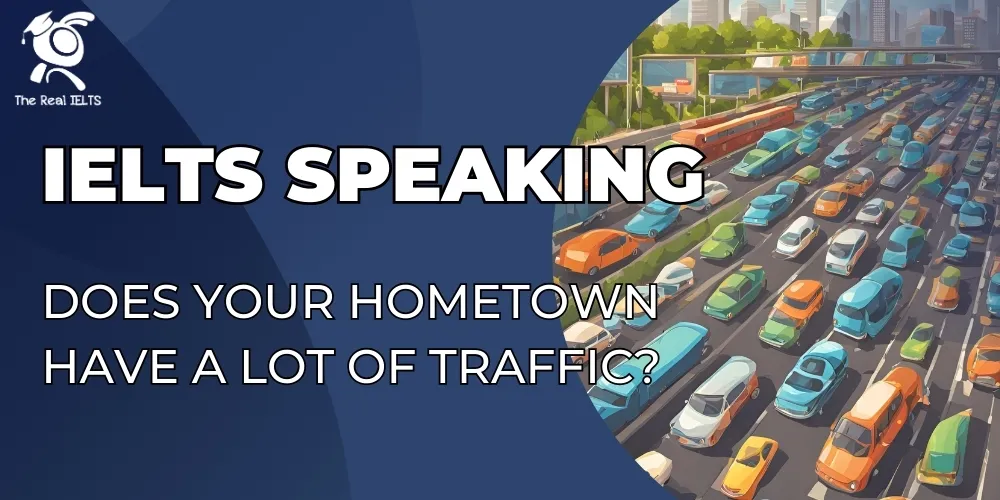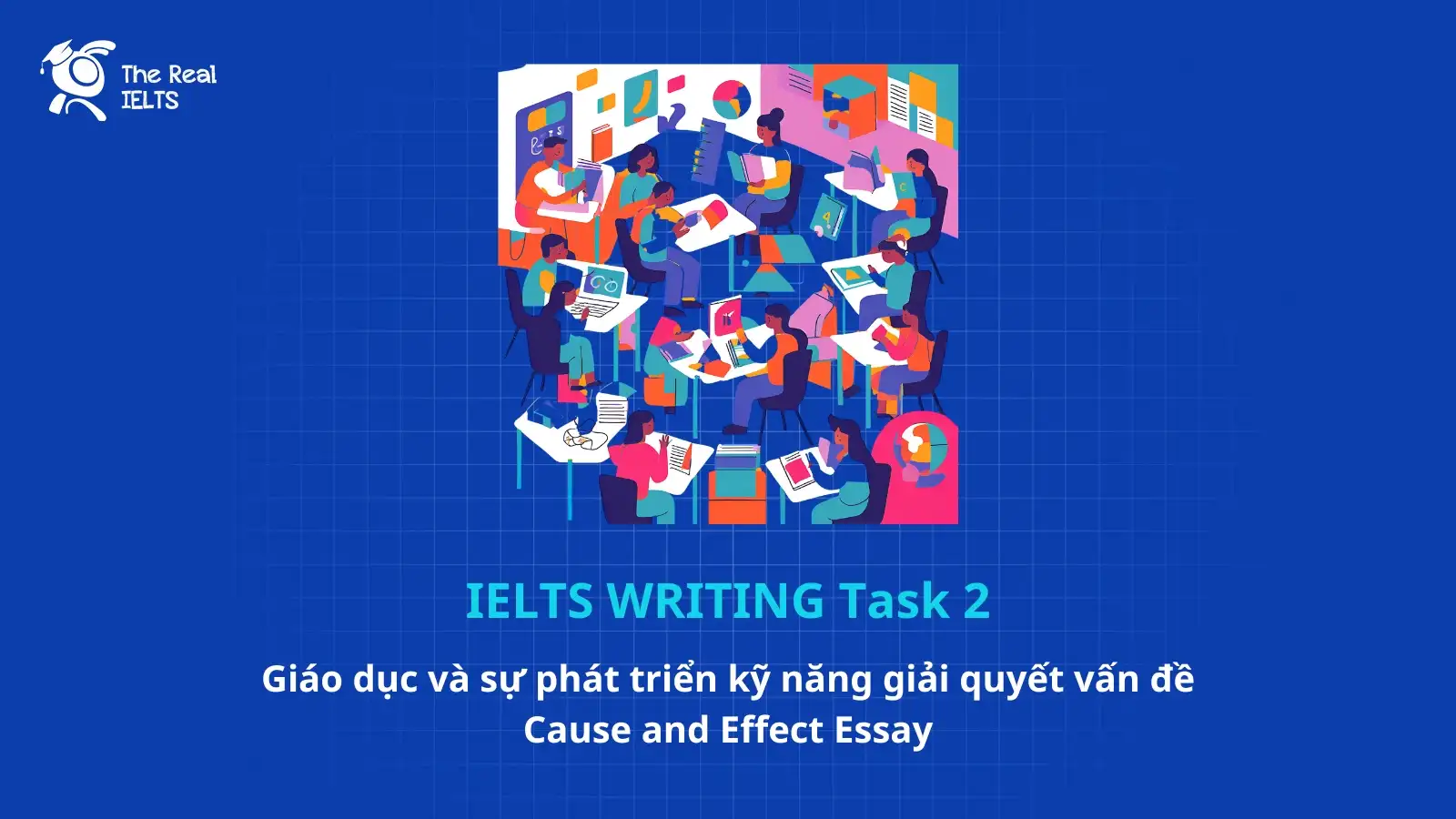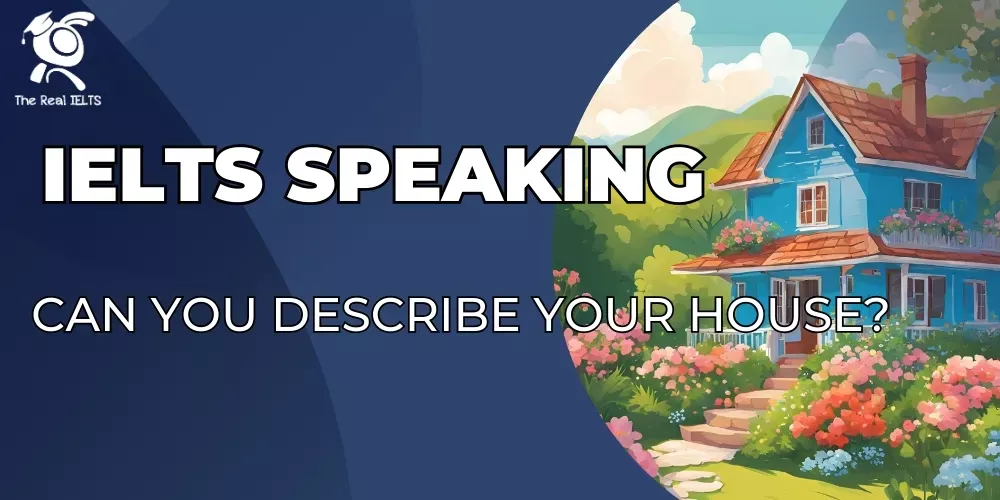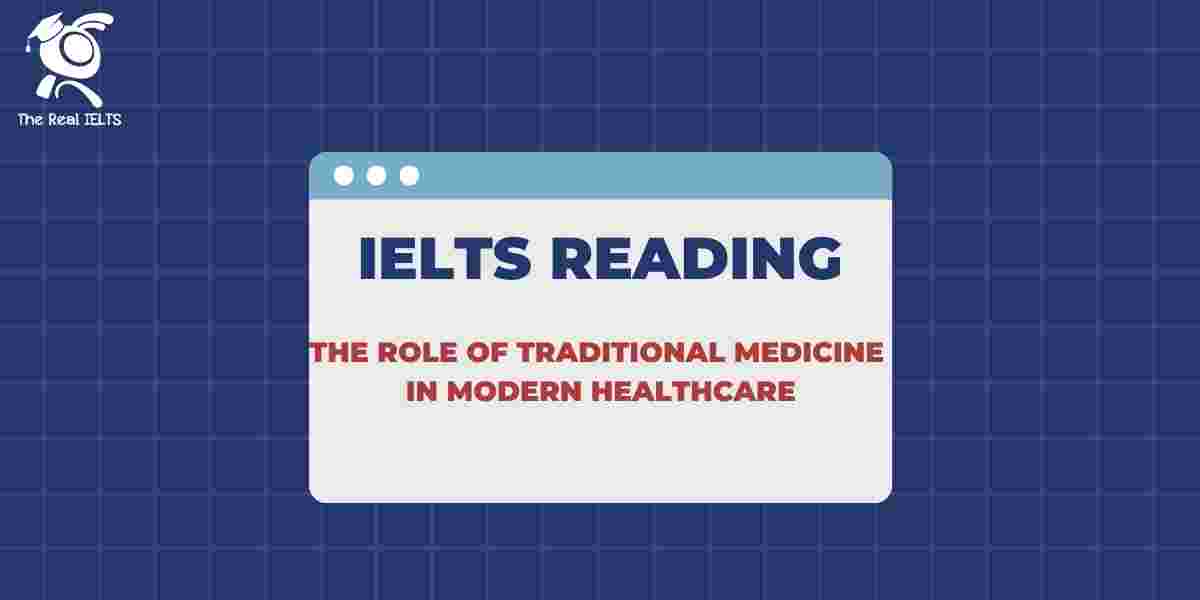Phần thi đọc hiểu trong IELTS là một thử thách đòi hỏi sự tập trung và kỹ năng phân tích vượt trội để xử lý các văn bản học thuật phức tạp. IELTS Reading kiểm tra khả năng đọc nhanh, xác định ý chính và trả lời chính xác 40 câu hỏi trong 60 phút. Để đạt band cao, thí sinh cần rèn luyện từ vựng học thuật, kỹ năng skimming, scanning và quản lý thời gian hiệu quả, đảm bảo tối ưu hóa điểm số.
Đọc thêm: IELTS Reading 11 dạng bài phần 6
The Impact of Urban Green Spaces
Urban green spaces, such as parks and gardens, play a vital role in improving the quality of life in cities. These areas provide residents with opportunities for recreation, exercise, and social interaction, which contribute to physical and mental well-being. Studies have shown that access to green spaces can reduce stress levels and improve mood, particularly for those living in densely populated areas. In addition, urban parks help mitigate environmental issues. Trees and plants absorb carbon dioxide, reduce air pollution, and lower city temperatures by providing shade. For example, a large park can decrease nearby temperatures by up to 2°C compared to areas with concrete surfaces.
However, maintaining green spaces can be challenging for city governments. Budget constraints often limit the resources available for park upkeep, leading to neglected areas that may deter visitors. Some cities have addressed this by involving community volunteers in maintenance tasks, which also fosters a sense of ownership among residents. Furthermore, green spaces can attract wildlife, such as birds and insects, supporting urban biodiversity. While this is beneficial, it may also lead to conflicts, such as when animals damage property. Overall, the benefits of urban green spaces outweigh the challenges, making them essential for sustainable urban development.
Questions
- Urban green spaces improve both physical and mental health of city residents.
- Large parks can increase city temperatures by up to 2°C.
- Community volunteers are sometimes involved in maintaining urban green spaces.
- Urban green spaces always prevent conflicts with wildlife.
- The majority of cities have enough funding to maintain their green spaces.
Answers
- True
- False
- True
- False
- Not Given
Explanations
- True: Đoạn văn nêu rằng không gian xanh đô thị cung cấp cơ hội cho giải trí, tập thể dục và tương tác xã hội, góp phần cải thiện sức khỏe thể chất và tinh thần. Nghiên cứu cũng cho thấy chúng giảm căng thẳng và cải thiện tâm trạng.
- False: Đoạn văn nói rằng một công viên lớn có thể giảm nhiệt độ khu vực lân cận tới 2°C, không phải tăng nhiệt độ như câu hỏi đề cập.
- True: Đoạn văn đề cập rằng một số thành phố đã giải quyết vấn đề bảo trì bằng cách cho cộng đồng tình nguyện tham gia các nhiệm vụ bảo trì không gian xanh.
- False: Đoạn văn cho biết không gian xanh thu hút động vật hoang dã, nhưng điều này có thể dẫn đến xung đột, như khi động vật gây thiệt hại tài sản. Do đó, chúng không luôn ngăn chặn xung đột.
- Not Given: Đoạn văn không cung cấp thông tin về việc liệu phần lớn các thành phố có đủ kinh phí để duy trì không gian xanh hay không, chỉ đề cập đến hạn chế ngân sách ở một số nơi.
The Impact of Urban Green Spaces
Urban green spaces, such as parks, gardens, and tree-lined streets, play a crucial role in enhancing the quality of life in cities. These areas provide residents with opportunities for recreation, exercise, and social interaction, contributing to physical and mental well-being. Studies have shown that access to green spaces can reduce stress, lower blood pressure, and improve mood. Moreover, urban greenery helps mitigate environmental issues. Trees and plants absorb carbon dioxide, reduce air pollution, and regulate city temperatures by providing shade and cooling effects. In densely populated cities, green spaces also serve as vital habitats for wildlife, supporting biodiversity. However, the availability of such spaces is often limited, particularly in rapidly growing urban areas where land is prioritized for commercial or residential development. This scarcity disproportionately affects lower-income communities, who may lack access to parks or gardens. City planners are increasingly recognizing the need to integrate green spaces into urban designs, with initiatives like rooftop gardens and vertical forests gaining popularity. Despite these efforts, challenges remain, including high maintenance costs and competing land-use demands. Ensuring equitable access to green spaces is essential for creating sustainable and inclusive cities.
Questions
- What is one benefit of urban green spaces mentioned in the passage?
A. They increase property prices in cities.
B. They improve residents’ mental well-being.
C. They eliminate the need for public transportation.
D. They reduce the cost of urban infrastructure. - How do urban green spaces contribute to environmental sustainability? (Choose 2 correct answers)
A. They absorb carbon dioxide.
B. They increase city traffic flow.
C. They provide habitats for wildlife.
D. They generate electricity for cities. - Why is access to green spaces limited in some urban areas?
A. Lack of public interest in parks.
B. Prioritization of commercial development.
C. Absence of city planners.
D. Low maintenance costs of green spaces. - What modern initiatives are mentioned to increase urban greenery? (Choose 2 correct answers)
A. Building more shopping malls.
B. Creating rooftop gardens.
C. Developing vertical forests.
D. Expanding highway networks. - Who is most affected by the lack of access to urban green spaces?
A. City planners.
B. Wildlife populations.
C. Lower-income communities.
D. Commercial developers.
Answers
- B
- A and C
- B
- B and C
- C
Explanations
- Câu 1: Đáp án B
Đoạn văn đề cập rằng các không gian xanh đô thị giúp giảm căng thẳng, hạ huyết áp và cải thiện tâm trạng, tức là cải thiện sức khỏe tinh thần (mental well-being).- A sai: Không có thông tin về việc tăng giá bất động sản.
- C sai: Không liên quan đến giao thông công cộng.
- D sai: Không đề cập đến giảm chi phí cơ sở hạ tầng.
- Câu 2: Đáp án A và C
Đoạn văn nêu rõ cây cối hấp thụ carbon dioxide (A) và không gian xanh là nơi sinh sống cho động vật hoang dã, hỗ trợ đa dạng sinh học (C).- B sai: Không có thông tin về cải thiện lưu lượng giao thông.
- D sai: Không đề cập đến sản xuất điện.
- Câu 3: Đáp án B
Đoạn văn giải thích rằng đất đai ở các khu vực đô thị đang phát triển nhanh thường được ưu tiên cho phát triển thương mại hoặc nhà ở, dẫn đến hạn chế không gian xanh.- A sai: Không đề cập đến thiếu sự quan tâm của công chúng.
- C sai: Không nói về sự thiếu nhà quy hoạch.
- D sai: Chi phí bảo trì cao là thách thức, không phải lý do hạn chế.
- Câu 4: Đáp án B và C
Đoạn văn liệt kê các sáng kiến như vườn trên mái nhà (rooftop gardens) và rừng thẳng đứng (vertical forests) để tăng không gian xanh.- A sai: Trung tâm thương mại không liên quan đến không gian xanh.
- D sai: Mở rộng đường cao tốc không được đề cập.
- Câu 5: Đáp án C
Đoạn văn nêu rằng các cộng đồng thu nhập thấp bị ảnh hưởng nhiều nhất do thiếu khả năng tiếp cận công viên hoặc vườn.- A sai: Nhà quy hoạch không phải đối tượng bị ảnh hưởng.
- B sai: Động vật hoang dã được hỗ trợ, không phải bị ảnh hưởng.
- D sai: Nhà phát triển thương mại không được đề cập là đối tượng bị ảnh hưởng.
The Rise of Telemedicine in Healthcare
Telemedicine, the practice of delivering healthcare services remotely via digital platforms, has transformed the medical field in recent years. Many experts argue that telemedicine increases access to healthcare, particularly for individuals in rural or underserved areas where medical facilities are scarce. Patients can consult specialists without traveling long distances, saving time and money. A 2023 study found that telemedicine reduced hospital readmissions by 15% for chronic disease patients, suggesting improved patient outcomes. However, some doctors express concerns about the quality of care delivered online, claiming that virtual consultations may miss critical physical symptoms that require in-person examinations. Despite these concerns, the convenience of telemedicine has led to its widespread adoption, with millions of virtual appointments conducted annually. Supporters believe it empowers patients to take control of their health by providing easier access to medical advice. Critics, however, warn that over-reliance on telemedicine could strain healthcare systems if patients avoid necessary in-person visits. Additionally, the technology requires reliable internet access, which remains a barrier for some communities. While telemedicine is not a complete replacement for traditional healthcare, its integration into medical practice is seen as a step toward a more accessible and flexible system. As technology advances, telemedicine is likely to play an even larger role in shaping the future of healthcare.
Reading Questions
- Do experts believe telemedicine improves access to healthcare for rural communities?
- Is there evidence that telemedicine has no impact on patient outcomes?
- Do all doctors agree that telemedicine provides high-quality care?
- Are virtual consultations considered more expensive than in-person visits?
- Do critics claim that telemedicine is unsuitable for all types of medical consultations?
Answers
- Yes
- No
- No
- Not Given
- Not Given
Explanations
- Câu 1: Đáp án đúng – Yes
Đoạn văn nêu rõ rằng “Many experts argue that telemedicine increases access to healthcare, particularly for individuals in rural or underserved areas” (Nhiều chuyên gia cho rằng telemedicine cải thiện khả năng tiếp cận chăm sóc sức khỏe, đặc biệt cho người dân ở khu vực nông thôn hoặc kém phát triển). Điều này xác nhận quan điểm đồng tình. - Câu 2: Đáp án đúng – No
Đoạn văn đề cập đến một nghiên cứu năm 2023 cho thấy “telemedicine reduced hospital readmissions by 15% for chronic disease patients” (telemedicine giảm 15% tỷ lệ tái nhập viện cho bệnh nhân mãn tính), chứng minh rằng telemedicine có tác động tích cực đến kết quả điều trị, trái ngược với quan điểm rằng nó không có tác động. - Câu 3: Đáp án đúng – No
Đoạn văn nêu rằng “some doctors express concerns about the quality of care delivered online” (một số bác sĩ lo ngại về chất lượng chăm sóc trực tuyến), cho thấy không phải tất cả bác sĩ đều đồng ý rằng telemedicine cung cấp chăm sóc chất lượng cao. - Câu 4: Đáp án đúng – Not Given
Đoạn văn đề cập rằng telemedicine giúp tiết kiệm chi phí (“saving time and money”), nhưng không có thông tin cụ thể so sánh chi phí của tư vấn trực tuyến với tư vấn trực tiếp, do đó không thể kết luận tư vấn trực tuyến có đắt hơn hay không. - Câu 5: Đáp án đúng – Not Given
Đoạn văn nhắc đến lo ngại của các nhà phê bình về việc phụ thuộc quá mức vào telemedicine và khả năng bỏ qua các lần khám trực tiếp cần thiết, nhưng không đề cập rõ ràng rằng họ cho rằng telemedicine không phù hợp với tất cả các loại tư vấn y tế.
The Rise of Renewable Energy
(A)
Renewable energy sources, such as solar, wind, and hydropower, have gained significant attention in recent decades. Unlike fossil fuels, these sources produce little to no greenhouse gas emissions, making them critical in combating climate change. Governments worldwide are investing heavily in renewable energy infrastructure, with solar panels and wind turbines becoming common sights. By 2024, renewable energy accounted for nearly 30% of global electricity production, a sharp rise from just 19% a decade earlier.
(B)
The growth of renewable energy is driven by technological advancements and declining costs. Improvements in solar panel efficiency and wind turbine design have made these technologies more competitive with traditional energy sources. For instance, the cost of solar power has dropped by over 80% since 2010. This affordability has encouraged both developed and developing nations to adopt renewables at an unprecedented rate, reducing reliance on coal and oil.
(C)
Despite the progress, challenges remain in integrating renewables into existing energy grids. Solar and wind power are intermittent, depending on weather conditions, which can lead to supply inconsistencies. Energy storage solutions, such as advanced batteries, are being developed to address this issue, but they remain expensive. Additionally, some regions lack the infrastructure needed to support large-scale renewable energy projects.
(D)
Public awareness and policy support are also key drivers of renewable energy adoption. Campaigns highlighting the environmental benefits of renewables have shifted consumer preferences toward sustainable options. Many countries have introduced subsidies and tax incentives to encourage businesses and households to invest in clean energy, further accelerating its growth.
Questions
- A significant increase in the share of global electricity from renewable sources.
- The impact of technological improvements on the cost of renewable energy.
- Difficulties caused by the intermittent nature of some renewable energy sources.
- The role of government incentives in promoting renewable energy use.
- The environmental advantage of renewable energy over fossil fuels.
Answers
- A
- B
- C
- D
- A
Explanations
- Câu 1: Đáp án A
Đoạn A đề cập rằng đến năm 2024, năng lượng tái tạo chiếm gần 30% sản lượng điện toàn cầu, tăng mạnh từ 19% một thập kỷ trước. Đây là thông tin trực tiếp về sự gia tăng đáng kể trong tỷ trọng điện từ các nguồn tái tạo, khớp với mô tả. - Câu 2: Đáp án B
Đoạn B giải thích rằng những tiến bộ công nghệ, như cải thiện hiệu suất tấm pin mặt trời và thiết kế tua-bin gió, đã làm giảm chi phí năng lượng mặt trời hơn 80% kể từ năm 2010. Điều này phù hợp với mô tả về tác động của cải tiến công nghệ lên chi phí năng lượng tái tạo. - Câu 3: Đáp án C
Đoạn C nêu rõ thách thức của năng lượng mặt trời và gió là tính gián đoạn, phụ thuộc vào điều kiện thời tiết, dẫn đến sự không ổn định trong cung cấp. Các giải pháp lưu trữ năng lượng như pin tiên tiến cũng được đề cập, khớp với mô tả về khó khăn do tính gián đoạn. - Câu 4: Đáp án D
Đoạn D đề cập rằng nhiều quốc gia đã giới thiệu các khoản trợ cấp và ưu đãi thuế để khuyến khích doanh nghiệp và hộ gia đình đầu tư vào năng lượng sạch. Điều này trực tiếp liên quan đến vai trò của các ưu đãi chính phủ trong việc thúc đẩy sử dụng năng lượng tái tạo. - Câu 5: Đáp án A
Đoạn A nêu rằng các nguồn năng lượng tái tạo như năng lượng mặt trời, gió và thủy điện tạo ra ít hoặc không có khí thải nhà kính, không giống như nhiên liệu hóa thạch, khiến chúng quan trọng trong việc chống biến đổi khí hậu. Đây là lợi thế môi trường của năng lượng tái tạo, khớp với mô tả.
Sustainable Tourism
In recent years, sustainable tourism has emerged as a vital approach to preserving the planet’s natural and cultural resources while supporting local economies. Unlike traditional tourism, which often prioritizes profit over environmental impact, sustainable tourism focuses on minimizing ecological damage and promoting cultural respect. This practice encourages travelers to choose eco-friendly accommodations, support local businesses, and engage in activities that do not harm the environment. For example, tourists are urged to use public transport or bicycles instead of private vehicles to reduce carbon emissions.
Sustainable tourism also emphasizes the preservation of cultural heritage. In many destinations, local traditions and historical sites are at risk due to over-tourism. By promoting low-impact travel, sustainable tourism helps protect these treasures. For instance, in Machu Picchu, Peru, visitor numbers are limited to prevent damage to the ancient ruins. Similarly, in Venice, Italy, measures like tourist taxes have been introduced to manage crowds and fund conservation efforts.
The economic benefits of sustainable tourism are significant. It creates jobs for local communities, from tour guides to artisans, and ensures that revenue stays within the region. However, challenges remain. High initial costs for eco-friendly infrastructure and lack of awareness among tourists can hinder progress. Despite these hurdles, the global demand for sustainable travel is growing, driven by environmentally conscious travelers who seek meaningful experiences while contributing to the planet’s well-being.
(Word count: 248)
Questions
Questions 1–4: Multiple Choice
- What is the primary focus of sustainable tourism compared to traditional tourism?
A. Maximizing profits for businesses
B. Reducing environmental and cultural harm
C. Encouraging mass tourism
D. Promoting luxury travel experiences - According to the passage, what is one way tourists can reduce carbon emissions?
A. Staying in luxury hotels
B. Using private vehicles
C. Traveling by public transport or bicycles
D. Visiting crowded destinations - Why are visitor numbers limited at Machu Picchu?
A. To increase tourism revenue
B. To protect the ancient ruins
C. To promote local businesses
D. To encourage luxury tourism - What is a challenge mentioned in the passage for implementing sustainable tourism?
A. Lack of tourist interest in cultural sites
B. High costs of eco-friendly infrastructure
C. Too many local jobs being created
D. Excessive government funding
Questions 5–8: True/False/Not Given
- Sustainable tourism encourages travelers to support local economies.
- All tourists are fully aware of sustainable tourism practices.
- Tourist taxes in Venice help fund conservation efforts.
- Sustainable tourism eliminates all environmental damage.
Questions 9–12: Matching Headings
Choose the correct heading for each paragraph from the list below:
i. Economic Benefits of Sustainable Tourism
ii. Challenges in Implementing Sustainable Tourism
iii. Introduction to Sustainable Tourism
iv. Preservation of Cultural Heritage
- Paragraph 1
- Paragraph 2
- Paragraph 3
- Paragraph 4
Questions 13–15: Sentence Completion
Complete the sentences below using no more than two words from the passage.
13. Sustainable tourism promotes ________ travel to protect cultural sites.
14. In Venice, ________ taxes help manage tourist crowds.
15. Eco-friendly ________ is a challenge due to high costs.
Questions 16–18: Short Answer Questions
Answer the questions below using no more than three words.
16. What type of accommodations are tourists encouraged to choose?
17. Who benefits from the jobs created by sustainable tourism?
18. What drives the global demand for sustainable travel?
Questions 19–20: Summary Completion
Complete the summary below using words from the passage.
Sustainable tourism aims to minimize 19. ________ damage while supporting local economies. It encourages travelers to engage in activities that respect both the environment and 20. ________ heritage.
Answers and Explanations
- Question 1
Correct Option: B
Explanation: Câu hỏi yêu cầu xác định trọng tâm chính của du lịch bền vững so với du lịch truyền thống. Bài đọc nêu rõ rằng du lịch bền vững tập trung vào “minimizing ecological damage and promoting cultural respect” (giảm thiểu thiệt hại sinh thái và thúc đẩy tôn trọng văn hóa), khác với du lịch truyền thống ưu tiên lợi nhuận. Lựa chọn B chính xác phản ánh điều này. Các lựa chọn khác (A, C, D) không phù hợp với nội dung bài đọc. - Question 2
Correct Option: C
Explanation: Bài đọc đề cập rằng du khách được khuyến khích sử dụng “public transport or bicycles” (giao thông công cộng hoặc xe đạp) để giảm lượng khí thải carbon. Lựa chọn C là đúng. Các lựa chọn khác (A, B, D) không được nhắc đến hoặc không liên quan đến việc giảm khí thải. - Question 3
Correct Option: B
Explanation: Bài đọc nêu rõ rằng số lượng du khách tại Machu Picchu được giới hạn để “prevent damage to the ancient ruins” (ngăn chặn thiệt hại cho các di tích cổ). Lựa chọn B là đúng. Các lựa chọn khác (A, C, D) không phù hợp với thông tin trong bài. - Question 4
Correct Option: B
Explanation: Bài đọc đề cập đến thách thức của du lịch bền vững bao gồm “high initial costs for eco-friendly infrastructure” (chi phí ban đầu cao cho cơ sở hạ tầng thân thiện với môi trường). Lựa chọn B là chính xác. Các lựa chọn khác không được đề cập hoặc không đúng. - Question 5
Correct Answer: True
Explanation: Bài đọc khẳng định rằng du lịch bền vững “supports local economies” (hỗ trợ nền kinh tế địa phương) bằng cách tạo việc làm và giữ doanh thu trong khu vực. Do đó, câu này là đúng. - Question 6
Correct Answer: False
Explanation: Bài đọc đề cập rằng “lack of awareness among tourists” (thiếu nhận thức của du khách) là một thách thức, nghĩa là không phải tất cả du khách đều nhận thức đầy đủ về du lịch bền vững. Do đó, câu này là sai. - Question 7
Correct Answer: True
Explanation: Bài đọc nêu rõ rằng ở Venice, “tourist taxes have been introduced to manage crowds and fund conservation efforts” (thuế du lịch được áp dụng để quản lý đám đông và tài trợ cho các nỗ lực bảo tồn). Câu này là đúng. - Question 8
Correct Answer: False
Explanation: Bài đọc chỉ đề cập rằng du lịch bền vững tập trung vào “minimizing ecological damage” (giảm thiểu thiệt hại sinh thái), không nói rằng nó loại bỏ hoàn toàn thiệt hại. Do đó, câu này là sai. - Question 9
Correct Answer: iii. Introduction to Sustainable Tourism
Explanation: Đoạn 1 giới thiệu khái niệm du lịch bền vững, so sánh với du lịch truyền thống và giải thích trọng tâm của nó. Tiêu đề iii phù hợp nhất. - Question 10
Correct Answer: iv. Preservation of Cultural Heritage
Explanation: Đoạn 2 tập trung vào việc bảo tồn di sản văn hóa, với các ví dụ như Machu Picchu và Venice. Tiêu đề iv là chính xác. - Question 11
Correct Answer: i. Economic Benefits of Sustainable Tourism
Explanation: Đoạn 3 thảo luận về lợi ích kinh tế của du lịch bền vững, như tạo việc làm và giữ doanh thu trong khu vực. Tiêu đề i phù hợp. - Question 12
Correct Answer: ii. Challenges in Implementing Sustainable Tourism
Explanation: Đoạn 4 đề cập đến các thách thức như chi phí cao và thiếu nhận thức. Tiêu đề ii là đúng. - Question 13
Correct Answer: low-impact
Explanation: Bài đọc đề cập rằng du lịch bền vững thúc đẩy “low-impact travel” (du lịch tác động thấp) để bảo vệ các di tích văn hóa. - Question 14
Correct Answer: tourist
Explanation: Bài đọc nêu rằng ở Venice, “tourist taxes” (thuế du lịch) được áp dụng để quản lý đám đông. - Question 15
Correct Answer: infrastructure
Explanation: Bài đọc đề cập rằng “eco-friendly infrastructure” (cơ sở hạ tầng thân thiện với môi trường) là một thách thức do chi phí cao. - Question 16
Correct Answer: eco-friendly accommodations
Explanation: Bài đọc khuyến khích du khách chọn “eco-friendly accommodations” (chỗ ở thân thiện với môi trường). - Question 17
Correct Answer: local communities
Explanation: Bài đọc nêu rằng du lịch bền vững tạo việc làm cho “local communities” (cộng đồng địa phương). - Question 18
Correct Answer: environmentally conscious travelers
Explanation: Bài đọc đề cập rằng nhu cầu du lịch bền vững được thúc đẩy bởi “environmentally conscious travelers” (du khách có ý thức về môi trường). - Question 19
Correct Answer: ecological
Explanation: Bài đọc nêu rằng du lịch bền vững nhằm “minimizing ecological damage” (giảm thiểu thiệt hại sinh thái). - Question 20
Correct Answer: cultural
Explanation: Bài đọc đề cập rằng du lịch bền vững tôn trọng “cultural heritage” (di sản văn hóa).
Urban Planning
Urban planning shapes the development of cities to ensure they are functional, sustainable, and livable. As urban populations grow, planners face the challenge of balancing economic progress with environmental sustainability. Modern urban planning emphasizes green spaces, such as parks and community gardens, to improve air quality and residents’ well-being. For instance, cities like Singapore integrate vertical gardens into skyscrapers, combining aesthetics with environmental benefits.
Efficient public transportation is another cornerstone of urban planning. Cities like Copenhagen have invested heavily in cycling infrastructure and metro systems to reduce reliance on cars, cutting traffic congestion and carbon emissions. However, implementing such systems requires significant funding and political support, which can be difficult to secure in less affluent regions.
Urban planning also addresses social equity. Affordable housing projects aim to provide homes for low-income families, preventing the displacement caused by gentrification. In Bogotá, Colombia, urban planners have prioritized low-cost housing near public transport hubs to enhance accessibility. Despite these efforts, challenges like rapid urbanization and limited budgets often hinder progress.
Technology plays a growing role in urban planning. Smart cities use sensors and data analytics to monitor traffic, energy use, and waste management, improving efficiency. However, concerns about data privacy and the high costs of smart technology remain. As cities evolve, urban planning must adapt to create inclusive, sustainable environments that meet the needs of diverse populations.
(Word count: 249)
Questions
Questions 1–4: Multiple Choice
- What is a key goal of modern urban planning?
A. Encouraging car usage
B. Balancing economic and environmental needs
C. Reducing green spaces
D. Focusing only on aesthetics - How does Singapore contribute to urban sustainability?
A. By building more roads
B. By integrating vertical gardens into buildings
C. By limiting public transportation
D. By reducing park areas - Why is affordable housing important in urban planning?
A. To increase property prices
B. To prevent displacement of low-income families
C. To attract more tourists
D. To reduce public transport use - What is a challenge mentioned for implementing smart city technologies?
A. Lack of urban growth
B. High costs and data privacy concerns
C. Excessive government funding
D. Low demand for technology
Questions 5–8: True/False/Not Given
- Urban planning aims to make cities more livable.
- All cities have sufficient funding for public transportation systems.
- Bogotá’s urban planning includes affordable housing near transport hubs.
- Smart cities eliminate all traffic problems.
Questions 9–12: Matching Headings
Choose the correct heading for each paragraph from the list below:
i. Role of Technology in Urban Planning
ii. Importance of Public Transportation
iii. Introduction to Urban Planning
iv. Addressing Social Equity
- Paragraph 1
- Paragraph 2
- Paragraph 3
- Paragraph 4
Questions 13–15: Sentence Completion
Complete the sentences below using no more than two words from the passage.
13. Urban planning emphasizes ________ spaces to improve air quality.
14. Copenhagen’s ________ infrastructure reduces traffic congestion.
15. Smart cities use ________ analytics to monitor urban systems.
Questions 16–18: Short Answer Questions
Answer the questions below using no more than three words.
16. What improves residents’ well-being in cities?
17. What do smart cities monitor with sensors?
18. What hinders urban planning in some regions?
Questions 19–20: Summary Completion
Complete the summary below using words from the passage.
Urban planning promotes 19. ________ environments by integrating green spaces and efficient transportation. Challenges like rapid 20. ________ and limited budgets affect its progress.
Answers and Explanations
- Question 1
Correct Option: B
Explanation: Câu hỏi hỏi về mục tiêu chính của quy hoạch đô thị hiện đại. Bài đọc nêu rõ rằng quy hoạch đô thị cân bằng giữa “economic progress with environmental sustainability” (tiến bộ kinh tế và bền vững môi trường). Lựa chọn B là chính xác. Các lựa chọn khác (A, C, D) không phù hợp với nội dung bài. - Question 2
Correct Option: B
Explanation: Bài đọc đề cập rằng Singapore tích hợp “vertical gardens into skyscrapers” (vườn thẳng đứng vào các tòa nhà cao tầng) để đóng góp cho sự bền vững. Lựa chọn B là đúng. Các lựa chọn khác (A, C, D) không được nhắc đến. - Question 3
Correct Option: B
Explanation: Bài đọc giải thích rằng nhà ở giá rẻ nhằm “preventing the displacement caused by gentrification” (ngăn chặn sự di dời do quá trình cải tạo đô thị). Lựa chọn B là đúng. Các lựa chọn khác không phù hợp. - Question 4
Correct Option: B
Explanation: Bài đọc nêu rằng thách thức của công nghệ thành phố thông minh bao gồm “high costs of smart technology” và “concerns about data privacy” (chi phí cao và lo ngại về quyền riêng tư dữ liệu). Lựa chọn B là chính xác. - Question 5
Correct Answer: True
Explanation: Bài đọc nêu rằng quy hoạch đô thị đảm bảo các thành phố “functional, sustainable, and livable” (chức năng, bền vững và đáng sống). Câu này là đúng. - Question 6
Correct Answer: False
Explanation: Bài đọc đề cập rằng việc triển khai hệ thống giao thông công cộng đòi hỏi “significant funding” (nguồn vốn lớn) và khó khăn ở các khu vực kém giàu có, nghĩa là không phải thành phố nào cũng có đủ kinh phí. Câu này là sai. - Question 7
Correct Answer: True
Explanation: Bài đọc xác nhận rằng ở Bogotá, quy hoạch đô thị ưu tiên “low-cost housing near public transport hubs” (nhà ở giá rẻ gần các trung tâm giao thông công cộng). Câu này là đúng. - Question 8
Correct Answer: False
Explanation: Bài đọc chỉ đề cập rằng thành phố thông minh sử dụng công nghệ để cải thiện hiệu quả giao thông, không nói rằng chúng “eliminate all traffic problems” (loại bỏ hoàn toàn các vấn đề giao thông). Câu này là sai. - Question 9
Correct Answer: iii. Introduction to Urban Planning
Explanation: Đoạn 1 giới thiệu khái niệm quy hoạch đô thị và các mục tiêu chính của nó. Tiêu đề iii là phù hợp nhất. - Question 10
Correct Answer: ii. Importance of Public Transportation
Explanation: Đoạn 2 tập trung vào vai trò của giao thông công cộng, với ví dụ về Copenhagen. Tiêu đề ii là đúng. - Question 11
Correct Answer: iv. Addressing Social Equity
Explanation: Đoạn 3 thảo luận về bình đẳng xã hội thông qua nhà ở giá rẻ ở Bogotá. Tiêu đề iv là chính xác. - Question 12
Correct Answer: i. Role of Technology in Urban Planning
Explanation: Đoạn 4 đề cập đến vai trò của công nghệ trong thành phố thông minh. Tiêu đề i là phù hợp. - Question 13
Correct Answer: green
Explanation: Bài đọc đề cập rằng quy hoạch đô thị nhấn mạnh “green spaces” (không gian xanh) để cải thiện chất lượng không khí. - Question 14
Correct Answer: cycling
Explanation: Bài đọc nêu rằng Copenhagen đầu tư vào “cycling infrastructure” (cơ sở hạ tầng xe đạp) để giảm ùn tắc giao thông. - Question 15
Correct Answer: data
Explanation: Bài đọc đề cập rằng thành phố thông minh sử dụng “data analytics” (phân tích dữ liệu) để giám sát các hệ thống đô thị. - Question 16
Correct Answer: green spaces
Explanation: Bài đọc nêu rằng “green spaces” (không gian xanh) cải thiện sức khỏe của cư dân. - Question 17
Correct Answer: traffic, energy, waste
Explanation: Bài đọc đề cập rằng thành phố thông minh sử dụng cảm biến để giám sát “traffic, energy use, and waste management” (giao thông, sử dụng năng lượng và quản lý chất thải). - Question 18
Correct Answer: limited budgets
Explanation: Bài đọc nêu rằng “limited budgets” (ngân sách hạn chế) là một trở ngại cho quy hoạch đô thị ở một số khu vực. - Question 19
Correct Answer: sustainable
Explanation: Bài đọc nhấn mạnh rằng quy hoạch đô thị thúc đẩy “sustainable environments” (môi trường bền vững). - Question 20
Correct Answer: urbanization
Explanation: Bài đọc đề cập rằng “rapid urbanization” (đô thị hóa nhanh) là một thách thức cho quy hoạch đô thị.
Sustainable tourism
Sustainable tourism has gained attention as travelers seek to minimize their environmental impact. Unlike traditional tourism, which often prioritizes profit, sustainable tourism focuses on preserving natural resources, supporting local communities, and respecting cultural heritage. This approach ensures that destinations remain viable for future generations. For instance, eco-lodges in Costa Rica use solar energy and recycle waste, while local guides educate visitors about biodiversity.
The rise of sustainable tourism stems from growing awareness of climate change and over-tourism. Popular destinations like Venice and Machu Picchu have faced strain from excessive visitors, leading to environmental degradation and cultural erosion. To counter this, some regions have introduced visitor caps and promoted off-season travel. Bhutan, for example, enforces a high-value, low-impact policy, charging tourists a daily fee to fund conservation and limit numbers.
However, challenges remain. Sustainable practices can be costly, and not all businesses can afford to adopt them. Additionally, tourists may prioritize convenience over eco-friendly options, such as choosing budget flights over trains. Education is key to changing behavior, with campaigns encouraging travelers to reduce waste and support local economies.
Sustainable tourism also benefits economies by creating jobs and preserving traditions. In Kenya, community-based tourism projects allow Maasai tribes to share their culture while earning income. Despite its benefits, achieving global adoption requires cooperation between governments, businesses, and travelers to balance profitability with environmental and cultural preservation.
Câu hỏi
- Multiple Choice
What is the primary focus of sustainable tourism?
A. Maximizing profits for businesses
B. Preserving natural and cultural resources
C. Increasing tourist numbers
D. Promoting luxury travel - True/False/Not Given
Eco-lodges in Costa Rica rely entirely on wind energy. - Yes/No/Not Given
Does sustainable tourism aim to support local communities? - Matching Information
Which paragraph mentions the impact of over-tourism on popular destinations?
A. Paragraph 1
B. Paragraph 2
C. Paragraph 3
D. Paragraph 4 - Matching Headings
Choose the correct heading for Paragraph 3:
A. Benefits of Sustainable Tourism
B. Challenges of Implementation
C. Examples of Eco-Friendly Practices
D. Government Policies - Matching Sentence Endings
Bhutan’s tourism policy focuses on…
A. attracting budget travelers.
B. limiting environmental impact.
C. promoting mass tourism.
D. reducing cultural heritage. - Sentence Completion
Sustainable tourism in Kenya allows the Maasai tribes to share their ______ while earning income. - Summary Completion
Sustainable tourism has grown due to concerns about ______ and the negative effects of excessive visitors on destinations like Venice. - Diagram Label Completion
Label the diagram below with the correct term from the passage:
[Diagram: A cycle showing “Tourism Policy → Conservation Funding → Limited Visitors → Environmental Protection”]
The term for the tourism policy in Bhutan is ______. - Short Answer Questions
What is one reason sustainable practices are difficult to implement? - Table Completion
Complete the table with information from the passage:















